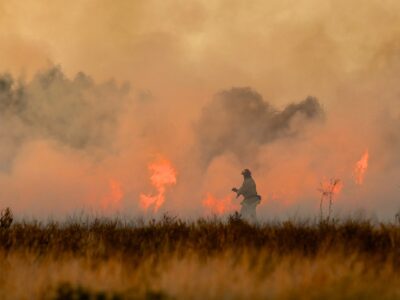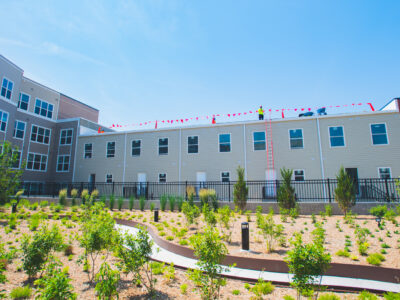As climate change intensifies, Americans are experiencing more extreme rainfall patterns, which bring costly economic consequences. A March 2025 Climate Central report reveals that 88% of 144 analyzed U.S. cities have seen increases in hourly rainfall intensity since 1970, with an average 15% increase in hourly rainfall rates.
The analysis revealed surprising regional patterns. The trend affects both traditionally wet and dry regions, creating widespread economic vulnerabilities. Cities with the most significant increases in hourly rainfall rates include Wichita, Kansas (+38%), Reno, Nevada (+37.0%), and Fairbanks, Alaska (+36.8%). Reno is particularly significant as a city renowned for its arid climate. Sioux City, Iowa;, Pittsburgh, Pennsylvania; and Tucson, Arizona also saw hefty increases of 28% to 29%. Counties that are most likely to see a 30% increase in extreme precipitation or more were primarily located in Alabama, Georgia, Maine, Mississippi, North Carolina, and Tennessee. Meanwhile, Alaska and Hawaii are most likely to experience the highest levels of extreme precipitation intensification as the world continues to warm.
The economic toll is staggering. According to a 2024 Senate Joint Economic Committee report, flooding now costs the U.S. economy between $179.8 billion and $496 billion annually, equivalent to between 1% and 2% of America’s GDP in 2023. Business impacts are substantial. Commercial properties annually incur direct costs of up to $40 billion from flooding, indirect losses of up to $34.3 billion due to operational disruptions, and damage to commercial physical assets of up to $19.9 billion.
Jeremy Porter, head of climate implications for First Street Foundation, told Axios, “We find around $100 billion in annualized damages to properties due to flood risk. Then when you add on infrastructure damage, costs of repair, lost wages/etc., the total damages to the economy from flooding easily move into the hundreds of billions of dollars.” Between $68.9 billion and $344.5 billion is required annually for infrastructure upgrades to protect against flooding, according to the report.
For homeowners, the situation is also becoming precarious. The Joint Economic Committee report estimated annual flooding damage of up to $15.1 billion for residences with federally-backed mortgages and up to $6.1 billion for residences with non-federally backed mortgages.
Additionally, a February 2025 report from First Street found that by 2055, climate change could erode $1.47 trillion in real estate value due to rising insurance costs and shifting consumer demand, affecting 84% of census tracts nationwide. In some communities, this is creating ‘climate abandonment neighborhoods’ as residents seek safer locations. The report estimated that 5.2 million Americans will relocate to areas less impacted by climate risk this year, with the number expected to soar to more than 55 million by 2055. Research published in 2023 in Nature Communications shows that exposure to high-frequency flooding results in 2% to 7% lower growth rates than baseline projections in affected areas.
However, infrastructure investments aimed at addressing these challenges present significant job opportunities. Additionally, climate resilience investments have demonstrated impressive returns—every dollar invested in flood protection saves $5 to $8 in damage costs. Nature-based solutions are particularly effective, with every dollar invested in reef and wetland restoration saving $7 in direct flood reduction benefits, according to the Environmental and Energy Study Institute. Protecting water treatment plants has yielded savings of up to $31 for every dollar invested. Legislation, such as the Inflation Reduction Act and the Bipartisan Infrastructure Law, allocated funding for these types of climate resilience projects.
As these trends continue, investments in climate resilience offer a path forward that combines economic necessity with opportunity. By focusing on infrastructure modernization, green solutions, and smart development, communities can simultaneously address climate risks while stimulating job growth in emerging sectors.





